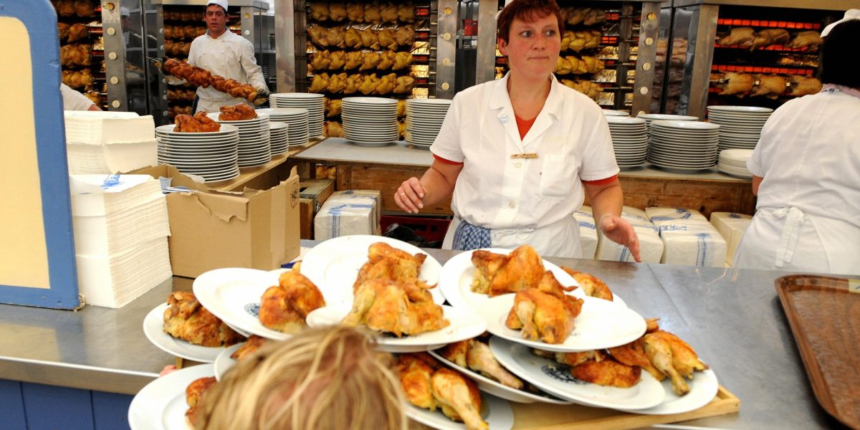The restaurant industry is facing “softer demand,” prompting a renewed focus on both value and customer experience, according to key takeaways from the 2025 Restaurant Finance and Development Conference reviewed by BofA Securities. Amidst these competitive pressures, a new report highlights chicken and beverages as the two most attractive segments for investment and growth.
BofA Securities, which attended the conference and met with franchisees and executives from coverage companies, was particularly impressed with one theme: “The chicken segment benefits from favorable protein economics.”
Industry insiders and executives also told BofA the “broad demographic reach” of chicken is driving brand expansion and new menu offerings. Chain operators are leaning into both value and quality messaging, especially as consumers respond well to combo deals, limited-time offers, and customizable meals. Chicken can provide a platform for culinary creativity while keeping food costs in check, the bank argued—a key advantage as the restaurant sector continues to adapt to the post-pandemic landscape.
Meanwhile, BofA noted the beverage category continues to attract robust investor interest. This growth is largely supercharged by the evolving preferences of younger consumers. While rapidly expanding concepts like Dutch Bros and others are effectively making inroads, operators acknowledged the market remains distinct enough to support “more coffee-forward concepts” like Starbucks, which appeal to a different customer base with a unique product mix and operation style.
The bullish outlook on chicken and beverages comes as the overall industry grapples with the need to generate demand in a challenging environment. With demand softer, operators across the spectrum are zeroing in on customer value and experience.
In the QSR space, companies are leaning heavily into value platforms, using combo meals and limited-time offers (LTOs) to drive traffic among increasingly price-sensitive consumers. Fast casual concepts are counterbalancing this by emphasizing quality messaging, enhanced digital experiences, and product customization.
Casual dining operators, recognizing the industry may have lost its focus on hospitality during the immediate aftermath of COVID disruption, are now strategically emphasizing service quality, ambiance, and creating experiential occasions. Across all segments, restaurants are developing new strategies to stimulate demand during non-peak periods, including the introduction of smaller portions and employing dynamic pricing models, such as discounts during off-peak times.
What stands out in 2025 isn’t just that protein sells—it’s that it now underpins both restaurant and retail food strategy. From the operational efficiency and menu adaptability of chicken restaurants to the innovative new launches in protein-packed snacks and drinks, the industry is seeing tangible economics favoring the protein trend on multiple fronts. Both restaurants and consumer packaged goods companies are betting on the stickiness of increased protein demand, even as inflation and shifting health priorities influence purchasing decisions. “Protein economics” look likely to be a key consideration, at least until Americans decided they’ve had enough of it.
For this story, Fortune used generative AI to help with an initial draft. An editor verified the accuracy of the information before publishing.







